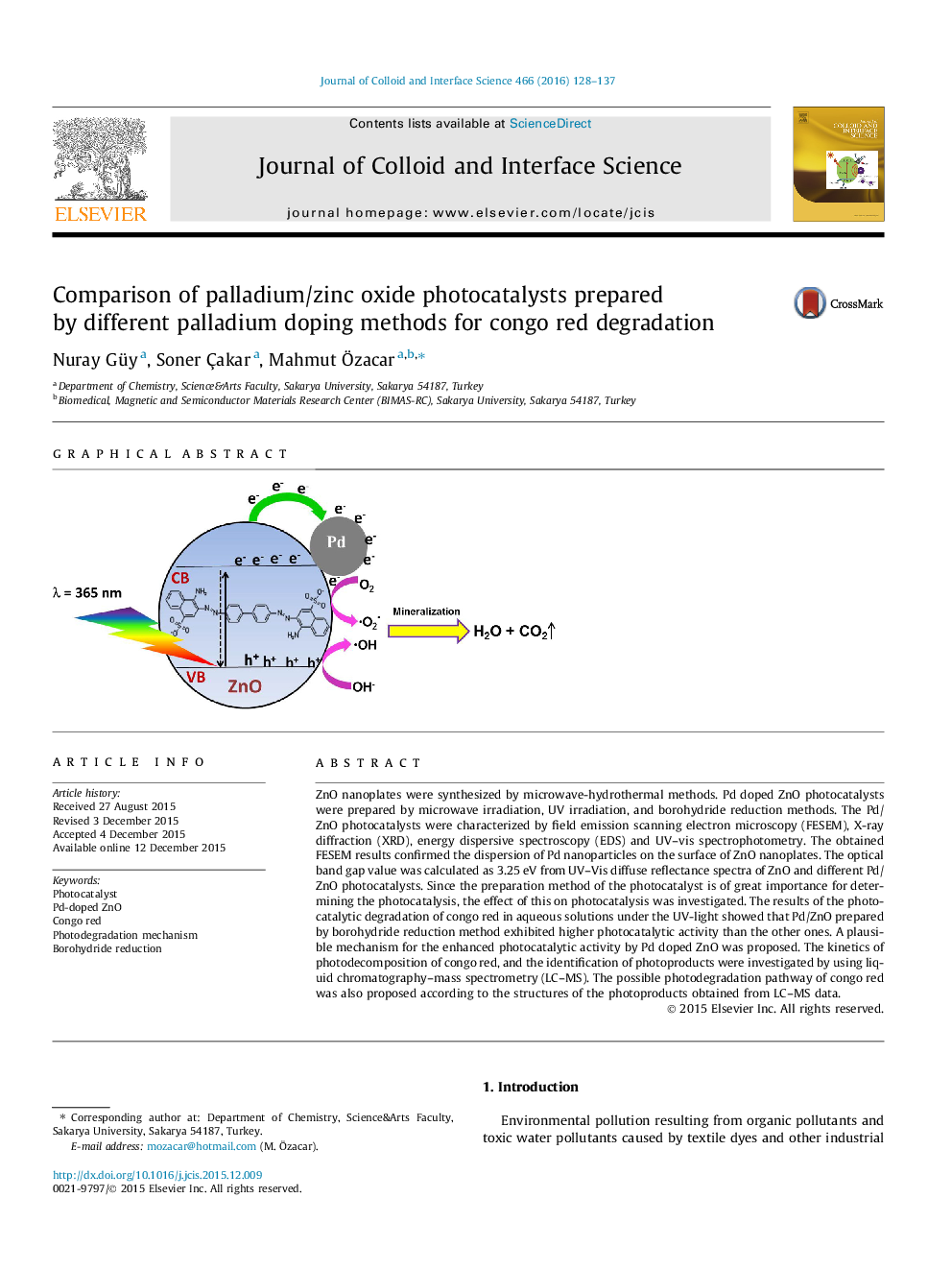| Article ID | Journal | Published Year | Pages | File Type |
|---|---|---|---|---|
| 606364 | Journal of Colloid and Interface Science | 2016 | 10 Pages |
ZnO nanoplates were synthesized by microwave-hydrothermal methods. Pd doped ZnO photocatalysts were prepared by microwave irradiation, UV irradiation, and borohydride reduction methods. The Pd/ZnO photocatalysts were characterized by field emission scanning electron microscopy (FESEM), X-ray diffraction (XRD), energy dispersive spectroscopy (EDS) and UV–vis spectrophotometry. The obtained FESEM results confirmed the dispersion of Pd nanoparticles on the surface of ZnO nanoplates. The optical band gap value was calculated as 3.25 eV from UV–Vis diffuse reflectance spectra of ZnO and different Pd/ZnO photocatalysts. Since the preparation method of the photocatalyst is of great importance for determining the photocatalysis, the effect of this on photocatalysis was investigated. The results of the photocatalytic degradation of congo red in aqueous solutions under the UV-light showed that Pd/ZnO prepared by borohydride reduction method exhibited higher photocatalytic activity than the other ones. A plausible mechanism for the enhanced photocatalytic activity by Pd doped ZnO was proposed. The kinetics of photodecomposition of congo red, and the identification of photoproducts were investigated by using liquid chromatography–mass spectrometry (LC–MS). The possible photodegradation pathway of congo red was also proposed according to the structures of the photoproducts obtained from LC–MS data.
Graphical abstractFigure optionsDownload full-size imageDownload high-quality image (62 K)Download as PowerPoint slide
